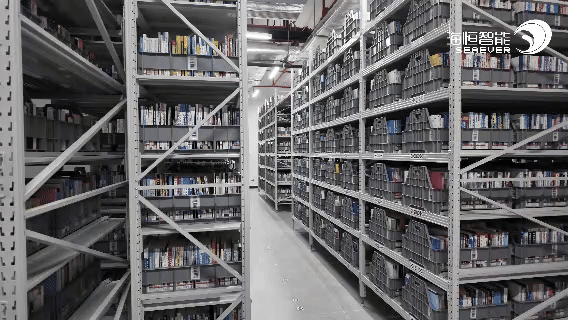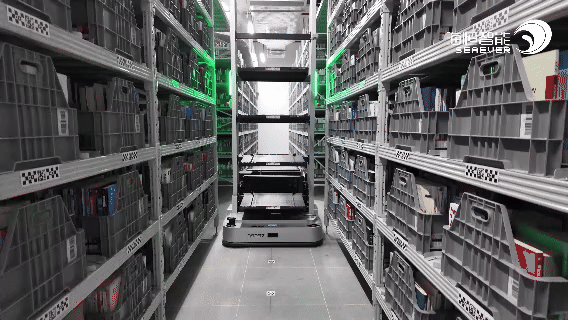
The total collection of books of Guangzhou Civil Aviation Vocational TechAcademy is about 712,300 volumes. As an important part of Guangzhou Civil Aviation Vocational Tech Academy, Huadu Chini Campus has a considerable number of professional books and resources, especially related to aviation, electronic information technology, drone technology, etc. to meet the needs of teaching and research in the school.
The ASRS library area is located on the first floor of the library, covering an area of about 180 square meters, with nearly 1,500 storage spaces, and the number of total warehouses designed is about 100,000 volumes. The library is mainly based on books, supplemented by borrowing. The design positioning adopts the roadway robot to carry the bookcase automatically on and off the shelves. The way to realize the fully automated unmanned library management and the automated up and down-shelf handling of bookcases realizes the fully automated intensive storage management of books and improves the access efficiency.

Highlights:
At the beginning of the design of the ASRS library, Seaever not only satisfied the needs of book storage, but also started from the reading needs of teachers and students in the school and fully integrated the library with the book lending process.
Book lending process
Submit an order: Readers select the desired book through the library system or mobile app and submit a loan application.
Intelligent scheduling: After the system receives the loan request, it automatically dispatches the robot to the designated bookshelf location to accurately locate and retrieve the bookcase containing the target book.
Transmission picking: The robot automatically transports the taken-out bookcase to the manual picking area. The system displays the target book location on the picking area screen, and the librarian quickly completes the book picking according to the prompts.
Notify to pick up the book: After the selection is completed, the librarian will send the book to the central cashier, and the system will immediately notify the reader to pick up the borrowed book through the display screen or mobile application.

Book return process
1. Book return and handling: Readers can borrow and return books from the book machine in the library and choose the workstation.
2. Initiate warehousing: The librarian initiates a warehousing request at the workstation, and the system immediately dispatches the bookcase to the workstation.
3. Scan packing: The librarian scans the returned books one by one, and loads them into the corresponding book box according to the system instructions to realize the binding of the book box and book information.
4. Automatic shelving: After receiving the instruction, the robot connects the bookcase full of books from the warehousing port, transports and stores the bookcase to the designated location according to the warehouse position assigned by the system, and completes the automated shelving process of the books.

The construction of ASRS library in colleges and universities is not only a modern facility for efficient storage of books, but also an automated management and retrieval service system with the help of advanced information technology implementation. Through the combination of the ASRS library system of WMS/WCS with the library retrieval system and the borrowing and returning service system, the original way of finding books has been completely changed, and the new service model of "book to person" is convenient for readers to inquire about books and borrow books anytime and anywhere.
It makes full use of the vertical space, greatly increasing the library's collection of books per unit area, saving more space for university libraries, and the library is no longer occupied by bookshelves. The library can provide more reading, seminar and seating services for teachers and students in the school, so that the library can serve readers more diversified, and then become a platform for knowledge sharing and innovative exchange.